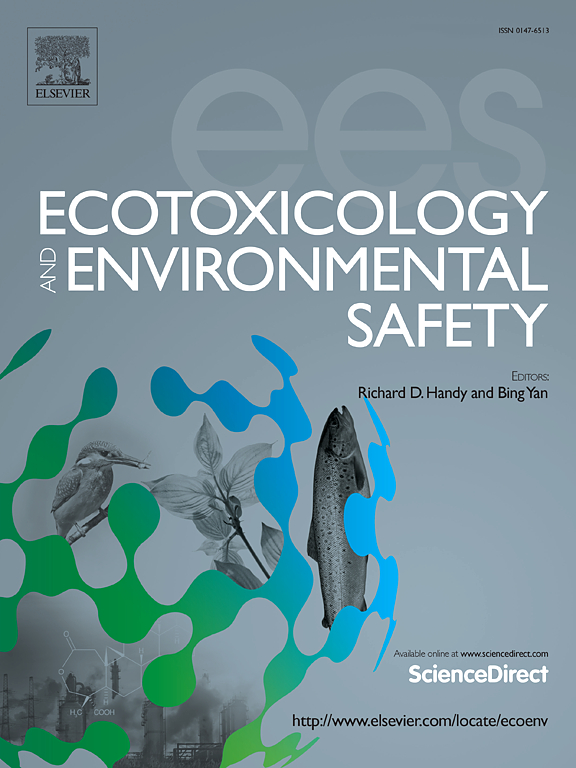褪黑素通过恢复亚细胞结构改善2,6-二氯-1,4-苯醌对小鼠卵母细胞的毒性作用
IF 6.2
2区 环境科学与生态学
Q1 ENVIRONMENTAL SCIENCES
引用次数: 0
摘要
2,6-二氯-1,4-苯醌(2,6- dcbq)是饮用水消毒过程中产生的消毒副产物(DBP)。由于它的频繁检测和高浓度,已经引起了极大的关注。然而,2,6- dcbq对卵母细胞减数分裂的影响仍然知之甚少。在这项研究中,我们证明2,6- dcbq暴露通过破坏纺锤体和染色体结构破坏卵母细胞的核成熟。此外,暴露于2,6- dcbq会通过改变肌动蛋白动力学、破坏皮质颗粒分布和损害关键细胞器(包括线粒体、内质网、高尔基体和溶酶体)的功能来损害细胞质成熟。在减数分裂成熟期间补充褪黑激素可以逆转这些作用,增强细胞器功能,降低活性氧(ROS)水平,减轻DNA损伤,抑制细胞凋亡。总之,这些发现表明2,6- dcbq导致卵母细胞细胞器功能障碍和减数分裂中断,而褪黑激素在减数分裂成熟过程中对这些中断提供保护作用。本文章由计算机程序翻译,如有差异,请以英文原文为准。
Melatonin ameliorates the toxic effects of 2,6-Dichloro-1,4-benzoquinone on mouse oocytes by restoring subcellular structures
2,6-Dichloro-1,4-benzoquinone (2,6-DCBQ) is a disinfection by-product (DBP) formed during the disinfection of drinking water. Due to its frequent detection and high concentrations, it has garnered significant attention. However, the effects of 2,6-DCBQ on oocyte meiosis remain poorly understood. In this study, we demonstrate that 2,6-DCBQ exposure disrupts nuclear maturation in oocytes by damaging the spindle and chromosome structure. Additionally, exposure to 2,6-DCBQ impairs cytoplasmic maturation by altering actin dynamics, disrupting cortical granule distribution, and compromising the function of key organelles, including the mitochondria, endoplasmic reticulum, Golgi apparatus, and lysosomes. Supplementing melatonin during meiotic maturation reverses these effects, enhancing organelle function, reducing reactive oxygen species (ROS) levels, alleviating DNA damage, and inhibiting apoptosis. Together, these findings show that 2,6-DCBQ causes organelle dysfunction and meiotic disruption in oocytes, while melatonin provides protective effects against these disruptions during meiotic maturation.
求助全文
通过发布文献求助,成功后即可免费获取论文全文。
去求助
来源期刊
CiteScore
12.10
自引率
5.90%
发文量
1234
审稿时长
88 days
期刊介绍:
Ecotoxicology and Environmental Safety is a multi-disciplinary journal that focuses on understanding the exposure and effects of environmental contamination on organisms including human health. The scope of the journal covers three main themes. The topics within these themes, indicated below, include (but are not limited to) the following: Ecotoxicology、Environmental Chemistry、Environmental Safety etc.

 求助内容:
求助内容: 应助结果提醒方式:
应助结果提醒方式:


